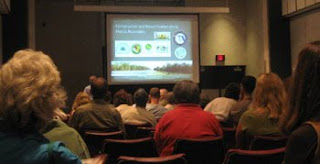Edible Native Recovers from the Frost

As I surveyed our acreage in north central Florida after the months of frost damage, I wondered if the Opuntia would make a comeback in time to flower. As I walked about, I noticed the cactus pads were flat, “deflated,” and reddish. As the weather turned warm and then hot, it looked to me as if the Opuntia was suffering all the more. And then we received a few spectacular rain storms that seemed to revive the plant from its winter shock. And now the field around our house is covered with yellow blossoms the dog is once again limping toward me holding up his paw for spine extraction. There are more than 200 species of Opuntia , which is endemic to the western hemisphere but has naturalized worldwide. Our native species include O. humifusa , O. stricta , and the rarer O. triancanthos (tropical), O. pusilla , and O. cubensis (tropical). Opuntia species are nourishing food for gopher tortoise that luckily lack pain receptors in their mouths. For us the effort to prepare them may ou...










